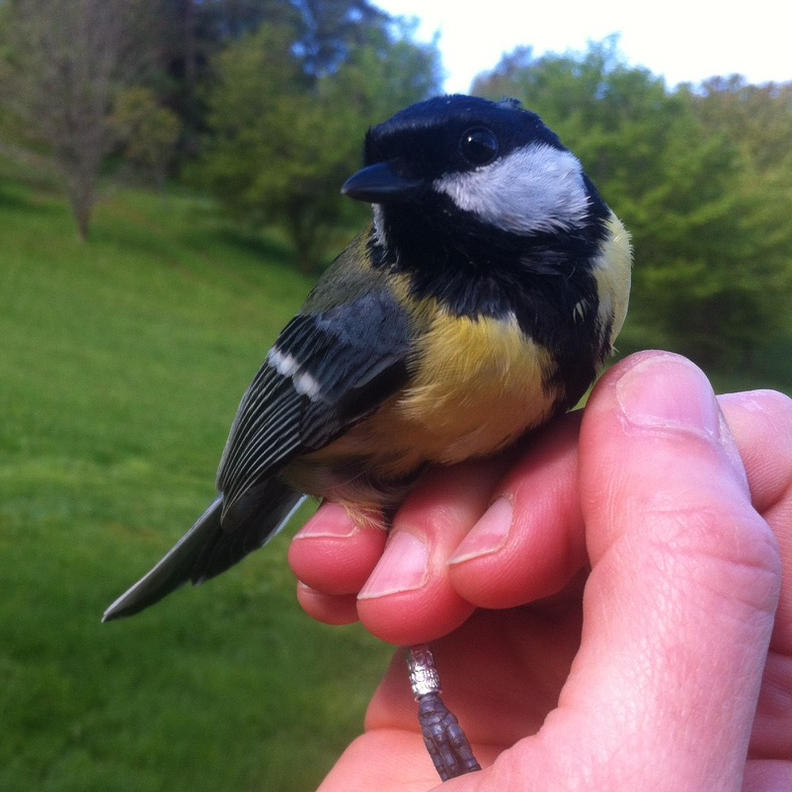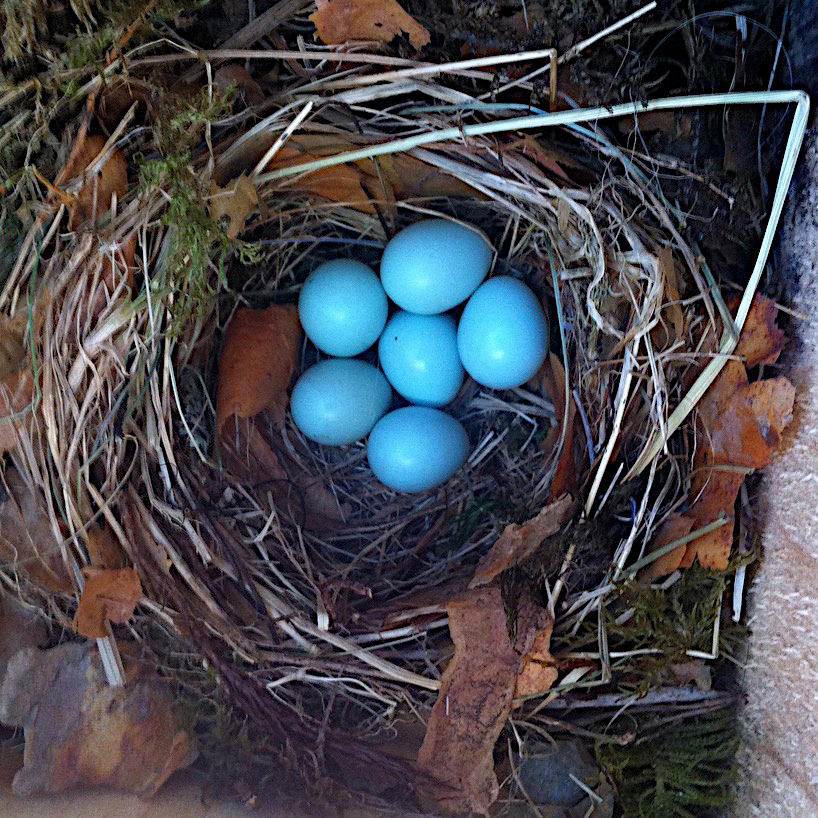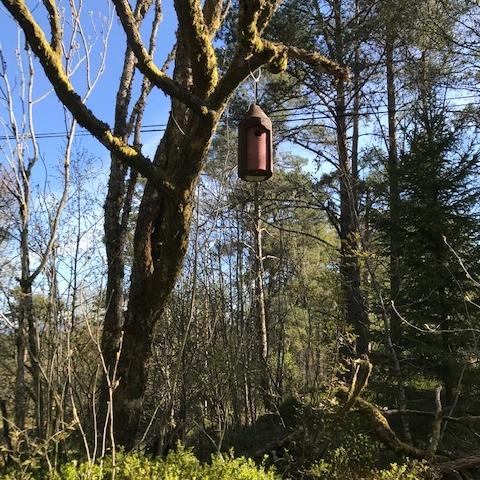Monitoring of hole-nesting birds
Dr. Adele Mennerat and colleagues (UiB, Department of Biological Sciences) use the Arboretum for education and research
Main content
Since 2017 the reproduction of hole-nesting birds has been monitored at the University Museum's Botanical garden and Arboretum. The main bird species using our nestboxes are great tits (Parus major) and blue tits (Cyanistes caeruleus). A few pairs of pied flycatchers (Ficedula hypoleuca) also adopt them each spring after their return from migration.
The UiB "hole nesting bird" team is composed of Adele Mennerat (researcher, in charge of data collection), Arild Breistøl (chief engineer), and Sigrunn Eliassen (Associate Professor), from the Department of Biological Sciences.
The nestboxes are used for purposes of ecological education and research. Students in the BIO241 course (Behavioural Ecology, taught by Sigrunn Eliassen) get the opportunity to join in the field a few times during the spring semester and familiarise themselves with the basics of fieldwork in avian ecology. They learn to determine egg-laying date, hatching date, and other phenological traits. As part of the course they can also exploit and analyse the data collected over the years.
In terms of research this site is part of the Studies of Individual Birds Network and Database (SPI-Birds: https://nioo.knaw.nl/en/bergens-arboretum). Each spring we systematically ring chicks and capture adults in each nest to ID them. This allows us to track individuals across years, establish mother-offspring relationships (paternity is a little less certain), and estimate the reproductive success of individuals - an important component of fitness. We also take morphological measures to estimate each individual’s body condition. Finally, we record nest size and composition. All of this is done according to rules and regulations, and by persons holding a ringing license delivered by Stavanger Museum (A.M. and A.B.).
Collecting these data in a standardised and systematic way requires a presence on site at least once a week in April – early May, and then several times a week. If you see some people walking around with a foldable ladder, there is a high chance that it is one of us on their way to a nestbox. If you have any questions, feel free to ask!
Fun facts
Tits build their nest mostly with moss, and add on top of it soft, lining materials that help insulating the eggs and the young chicks who are at first not able to thermoregulate. Considering the Bergen weather in spring this is very important for their survival! The most commonly used natural lining materials at Arboretum are feathers and mammalian hair (often wool). However, tits breeding around humans sometimes use unexpected materials: toilet paper, synthetic fibers, pieces of string... Look what we found in one of our nests: long, brown, human hair! Whoever hair this is, probably does not suspect it was later recycled to keep young chicks warm and dry...
Did you know that the blue tit is known to use fresh aromatic plants in their nests (lavender, mint, and more), in addition to other nest materials? This behaviour is most frequent in Southern Europe, for example Corsica where more than 15 aromatic species are used in nests of blue tits. Evidence shows that these plants have an antibacterial function and help the chicks grow better before they fledge at 20 days of age. Here in the North aromatic plants are scarce in nature, but it seems that blue tits can use them when they find them. Nests at the Botanical garden are sometimes found with fresh lavender or mint leaves.
References
Mennerat A, Mirleau P, Blondel J, Perret P, Lambrechts MM, Heeb P. 2009. Aromatic plants in nests of the blue tit Cyanistes caeruleus protect chicks from bacteria. Oecologia 161:849-855. [ doi:10.1007/s00442-009-1418-6 ]
Mennerat A, Perret P, Bourgault P, Blondel J, Gimenez O, Thomas DW, Heeb P, Lambrechts MM. 2009. Aromatic plants in nests of blue tits: positive effects on nestlings. Animal Behaviour 77:569-574. [ doi:10.1016/j.anbehav.2008.11.008 ]




